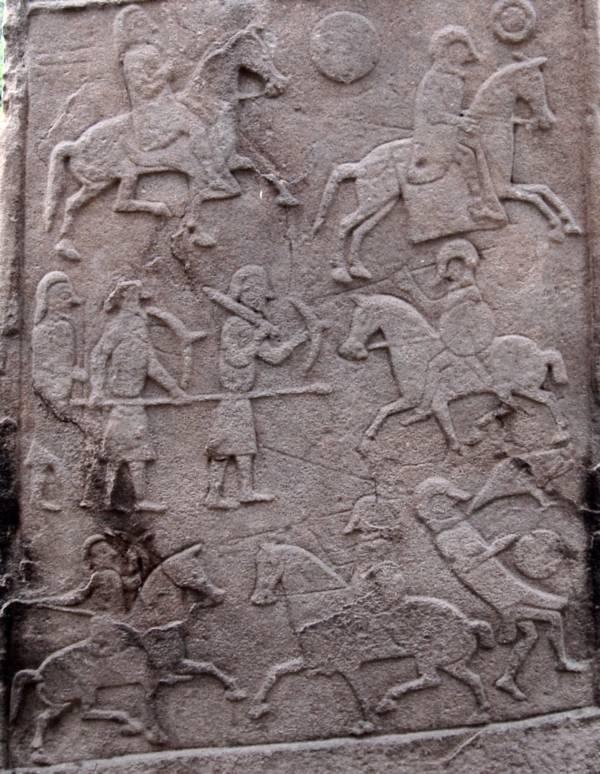Andrea Anderson
Source - https://www.genomeweb.com/sequencing/ancient-sequences-provide-window-pict-population-history-modern-day-relationships#.ZEt8G7LMKUk
 A Pictish stone tells of a battle scene, presumably the Battle of Nechtansmere of 685 AD.
A Pictish stone tells of a battle scene, presumably the Battle of Nechtansmere of 685 AD.
New ancient DNA research has revealed genetic relationships for the Picts, a mysterious and culturally distinct group that ruled Scotland and other parts of northern Britain during the first millennium CE, during a period of Roman occupation at sites to the south.
"Overall, our results are in agreement with most of mainstream contemporary archaeology, which proposes continuity from the Iron Age into the Early Medieval period," senior and co-corresponding author Linus Girdland-Flink, an archaeology researcher affiliated with the University of Aberdeen and the Liverpool John Moores University, said in an email. "This is important since the Picts are surrounded by all kinds of myths of exotic origins, which do not agree with modern archaeology, but which sometimes persists in popular accounts."
As they reported in PLOS Genetics on Thursday, Girdland-Flink and colleagues started with ancient DNA from one northern and seven southern Pictish representatives, using shotgun sequencing to assess the genomes of one northern and one southern-central individual at depths of 2.4-fold and 16.5-fold, respectively.
They also generated mitochondrial genome sequences for seven of the ancient Picts, before analyzing the genomes — which represented Pictish ancestry patterns from the 5th century to 7th century — in combination with more than 8,300 published genome sequences from ancient or present-day individuals.
"Among the peoples present during the first millennium CE in Britain, the Picts (ca. 300-900 CE) are one of the most enigmatic," the authors explained. "Their unique cultural features … and the scarcity of direct writing resulted in many diverse hypotheses about their origin, lifestyle, and culture, the so-called 'Pictish problem.'"
Based on allele frequency and haplotyping patterns, the team found that the Pictish individuals profiled fell into a gene pool that overlapped with British Isle ancestry in the Iron Age and Roman Age, Girdland-Flink noted.
"Our study provides a novel insight into genetic affinity between ancient and modern populations of the British Isles, a rare opportunity to directly observe micro-scale evolution," he and his coauthors wrote.
The results pointed to haplotype sharing and shared identity-by-descent (IBD) between the ancient Pictish individuals profiled and present-day populations in western Scotland, Wales, Northern Ireland, and Northumbria, for example, while highlighting the presence of additional ancestry from populations previously found in the southern UK.
"We find that the Pictish genomes share more of these IBD 'chunks' with present-day individuals from northern and western parts of Scotland, which we interpret as genetic continuity," Girdland-Flink explained. "But present-day populations all across the British Isles also share IBD with Anglo-Saxon genomes from more southern parts, suggesting gene flow and admixture from south to north across the isles."
Even so, the data highlighted structure within the Pictish populations, including genetic differences between populations on the mainland or island sites, the researchers reported, while the observed mitochondrial patterns did not match predicted matrilocal Pictish population structures.
"This finding challenges the older hypothesis that Pictish succession was based on a matrilineal system, assuming that wider Pictish society was organized in such a manner," the authors suggested.
More generally, Girdland-Flink suggested, the study "provides an important baseline for the type of analytical resolution the field should strive for" as IBD methods become increasingly more computationally accessible.
"These types of methods hold great potential for really getting to grips with fine-scaled population structure over time and space," he suggested, adding that "if we combine ancient DNA and IBD analyses with other archaeological data, such as strontium isotopes — which can reveal lifetime mobility — we can access important information on both the individual and population level."